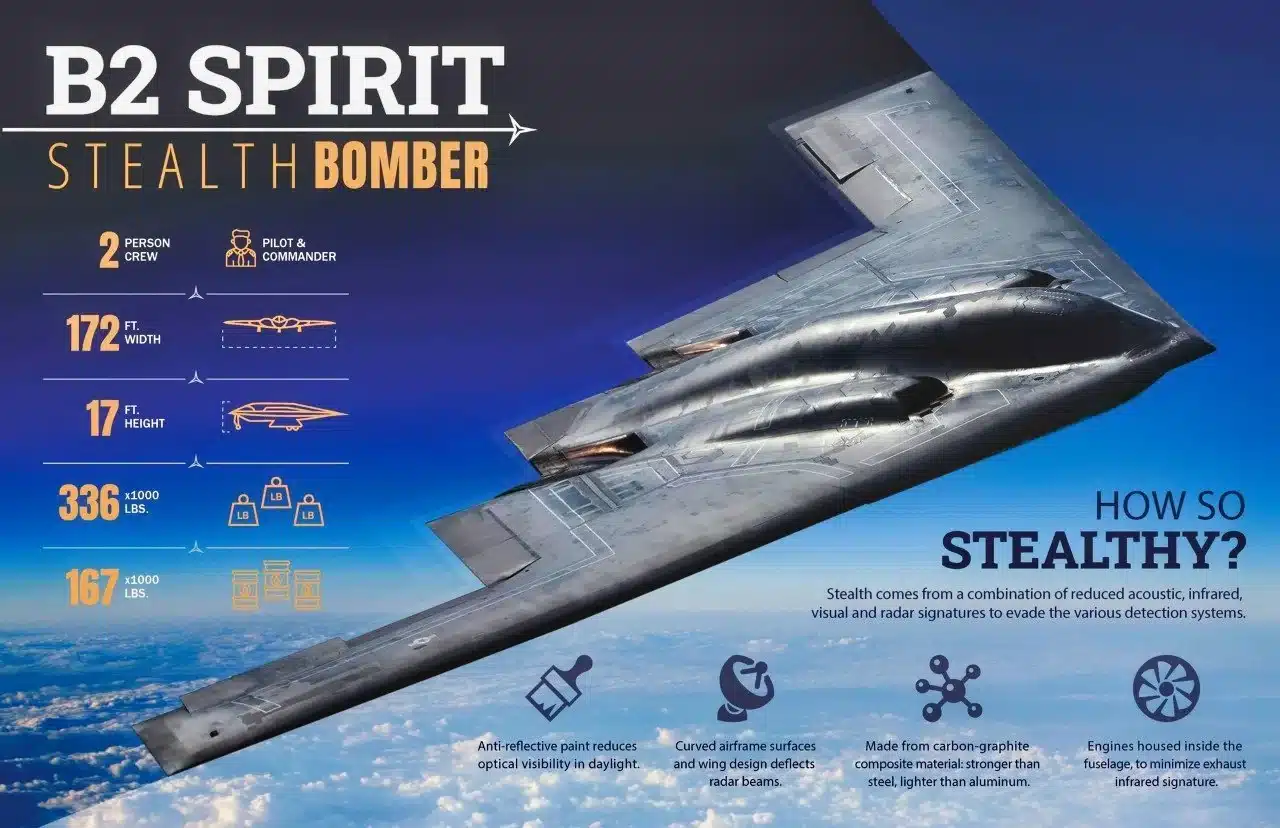Stealth is a buzzword, please keep in mind that long wave radars detects the minuscule radar cross sections of “stealth” platforms. It can still be detected by a sufficiently powerful radar or at sufficiently close ranges. Dual-band radars are more effective against stealth than disjointed sensors, being able to focus the high-frequency beam to track the blips spotted by the low-frequency one.
Pardon me while I geek out: At a low enough frequency, one cannot use angled surfaces to deflect the re-radiated radio frequency (RF); even a very thin wire one half wavelength long is optimally sized to radiate it and the manned aircraft profile is impossible to miss. Low frequencies can detect even a stealthy aircraft because the aircraft itself is large enough that it begins to act like an antenna, re-radiating the electromagnetic field as current it induces flows from one end (or one side) to the other. The absorbing material applied to attenuate higher frequency radars isn’t thick enough to effectively eliminate the current flowing in the aircraft’s body and airfoils at low frequencies, so it reflects more RF.
At the margin in the 21st century, stealth is old school and affordable mass will be the keen edge to defeat first world militaries.
The B-1 Lancer (45 currently in service) and B-2 bombers will retire more than a decade earlier than previously planned under the Air Force’s Bomber Vector, a roadmap which also calls for re-engining and upgrading the B-52 so it can continue to serve into the 2050s.
And keep in mind for my consistent readers that the rule of three obtains here where only one third are available to go aloft operationally at any one time. This means effectively six air-frames available that, by the way, are not invisible to potential near-peer and peer competitors like China and Russia.
The U.S. Air Force is set to retire another B-2 Spirit bomber, reducing its fleet to just 19 air-frames. The decision comes after a ground accident in late 2022 rendered the aircraft uneconomical to repair.
The Spirit may have been introduced more than 35 years ago, but the platform continues to provide significant capabilities to the Air Force.
Back in the 1970s, the service recognized its need for an air-frame capable of deflecting or absorbing radar signals and thus flying nearly undetected. Northrop Grumman was selected to create the B-2 bomber. The Spirit can carry its heavy weapons load to pretty much any point in the world within hours. It can lug 40,000 pounds of conventional and nuclear weapons, including up to 16 Joint Direct Attack Munition satellite-guided 2,000-lbs bombs.
https://nationalinterest.org/blog/buzz/air-forces-b-2-bomber-facing-sad-reality-211168
The B2 design is half a century old and the B52 is running up on eight decades. The B-52H is the only variant in service today, with 72 aircraft active as of early 2024. A total of 744 B52s were built during the lifetime of production. Ongoing upgrades, including new Rolls-Royce engines, suggest that the B-52 will likely fly past 2050 (twice the anticipated service life). That last production B52H left the factory floor in 1962. Total USAF bomber fleet is currently at 137 air-frames. US bomber production in WWII was 97,810 air-frames.
Only 21 B-2s were manufactured because of the plane’s hefty price tag—about $2 billion per plane—making it the most expensive aircraft ever built. The already small fleet shrunk to 20 in 2008, when a B-2 was destroyed in a crash at Andersen Air Force Base in Guam. The news comes as bomber-builder Northrop Grumman was awarded a $7 billion sustainment contract for the program earlier this month. The work, which provides for “B-2 enhancements, sustainment, logistics elements including sustaining engineering, software maintenance, and support equipment,” will last through 2029, according to the contract listing.
In addition to the B-2 divestment, the force structure report provides more details about the service’s plans to shed hundreds of planes in order to invest in new technology, like unmanned aircraft.
The Air Force plans to get rid of 932 aircraft between fiscal 2025 and 2029, which will generate over $18 billion in savings, according to the report. Including the one B-2, the service wants to get rid of 251 aircraft total in fiscal 2025. Then, it wants to shed 293 aircraft in 2026, 235 in 2027, 95 in 2028 and 64 in 2029.
https://www.defenseone.com/technology/2024/05/b-2-crashed-2022-wont-be-fixed-air-force-confirms/396519/:~:text=The%20decision%20brings%20the%20service’s,2%20and%20B-1B%20Lancer.
Two billion per aircraft.
Maintenance costs for the B2 is $3.5 million per month.
Please note in the quote above that shedding 932 aircraft between 2025 and 2029 generates $18 billion in savings and the B2 cost two billion each. Put that in your pipe and smoke it.
I predict the B21 Raider will be a hot mess if the creation of exquisite platforms in the last half century is any indicator.
Email me at cgpodcast@pm.me.





























